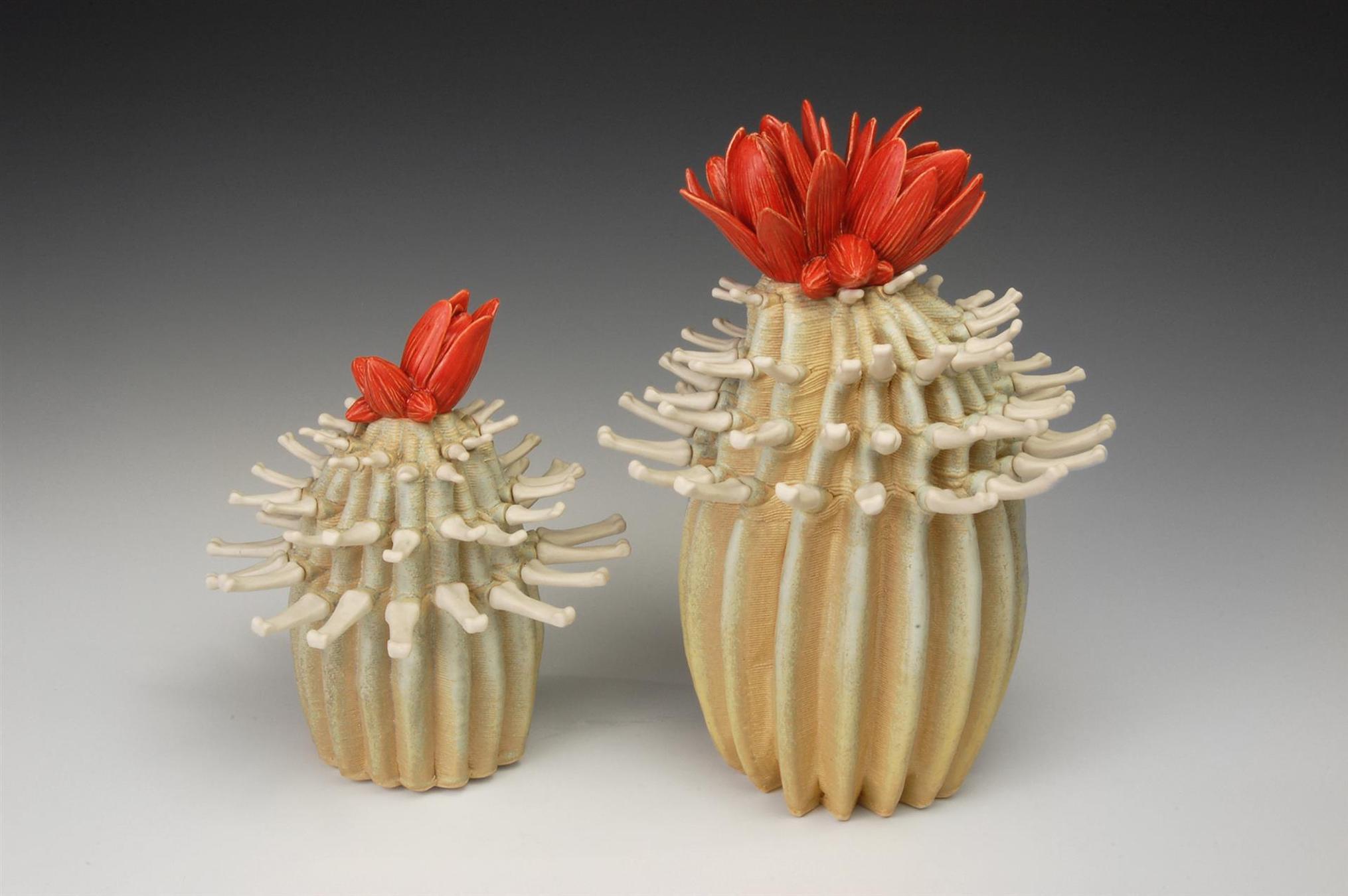Visions In Clay 2023
Elaine Quave
Elaine Quave currently teaches ceramics, Art History and 3D Design at the South Carolina Governor’s School for the Arts and Humanities. She received a BFA in crafts from University of the Arts and then earned her MFA in ceramics at Tyler School of Art, Temple University in 2009. In addition to experience as a 3-D and ceramics instructor at Tyler, SCGSAH, and the Greenville County Museum of Art in Greenville, SC, Mrs. Quave has also assisted for workshops at North Carolina’s Penland School of Craft and Pilchuck School of Glass in Washington. She is the 2015 recipient of the Regina Brown Teacher Development Award through the National K12 Ceramic Exhibition. Mrs. Quave's work has been exhibited nationally at venues including the Arrowmont School of Arts and Crafts, Baltimore Clayworks, the Franklin Park Conservatory and Botanical Gardens, and the Lee Gallery of Clemson University.
In my work I subjectively consider human physiology and psychology while objectively analyzing our connection/relationship to the natural world
The human lens through which we experience the world is an inescapable circumstance. It compels one to see the world in relation to the self. Though our bodies are animal in nature, we perceive our minds as not, resulting in an unresolvable conflict that epitomizes the human condition. Scientific inquiry of our physical substance shows we don’t completely understand the human body. New research on microbial life found on and within the body is revealing that humans aren't just human cells and tissue but that we coexist and depend on a multitude of other living organisms, many of which heavily play into our health and well being. Research on many disorders and diseases are beginning to suspect missing microbes or lack of biodiversity of these microbes as contributing factors. My work takes the structure of the body and makes it unfamiliar and foreign in order to describe this gap in knowledge about our own bodies and minds.
In my art, porcelain replicas of human bones are arranged to look like plant life in order to illustrate the extent to which humans have impacted ecosystems around us. We are currently living in a geological age referred to as the anthropocene. In this new age humans are potentially having more effect on the earth than ever before, relative to natural forces. Every other living being on this planet feels the affects of our presence through the changes we have made to the air, the water, and the soil. Biodiversity is crashing at an alarming rate and we are left trying figure out which species are important to preserve. We are gardening the wilderness, deciding how much to leave, where to leave it, and for what reason. In my work the sparsely placed life of butterflies and flowers represents this dwindling biodiversity, and seeks to create an impact reminiscent of a bleached coral reef; the initial feeling of beauty and serenity dissolves as the resulting loss is recognized.
The work I make is a memento mori – a reminder of mortality - yet it also serves as an expression of universal connectivity. By representing plants from the bodies of humans, the work seeks to erase our human perception of divisiveness where we recognize the entities we name and define as being separable. My goal is that this realization of our intimate connection to nature can help lead to changes in the way we reflect on ourselves as human and the ways that we treat our planet and the other animals with which we coexist. In my art I want to lead the viewer to a place where the reflection of self can have a terrifying beauty and an ethereal sensation, a place where the familiar becomes unfamiliar, a place where we ponder the beauty of the world around us and recognize our inseparable connection to it.

Crossroads Cacti (set)
Stoneware, porcelain, steel
11” X 15” X 8”
2019
$2,240






